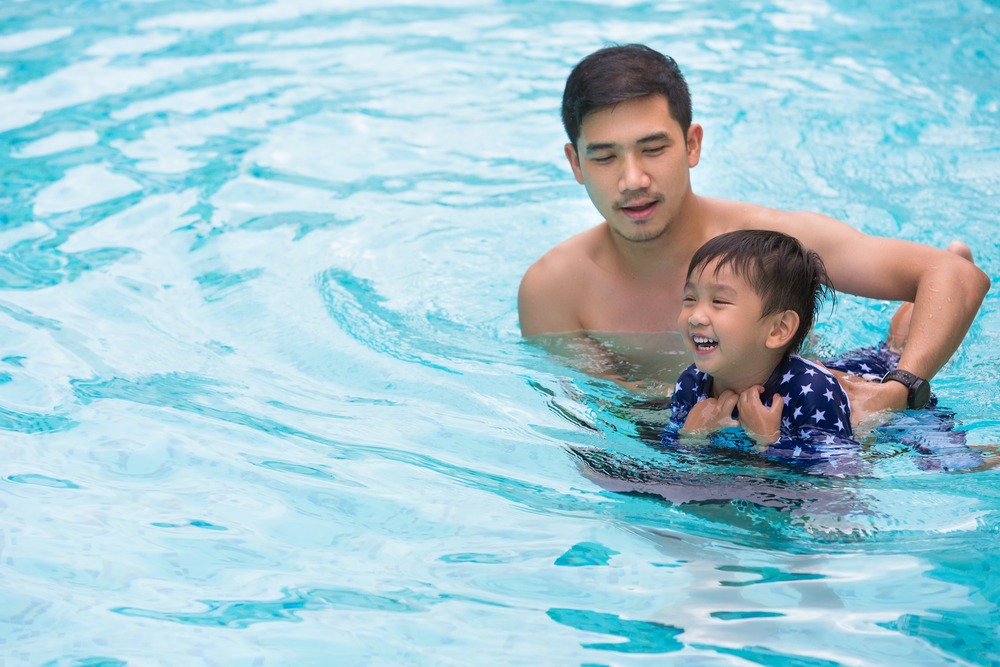Drowning is a leading cause of injury-related death for Canadians, and it often happens quickly and silently. In Manitoba, on average, there are 23 fatal drownings every year. Many of these drownings happen in bathtubs, backyard pools, lakes and rivers. Practice being safe around water in nature and in a backyard.
Children are at higher risk for drowning
All children are at risk for drowning, but young children under five years old are at higher risk because they:
- are attracted to water but unable to understand the danger
- can walk but not swim
- are still developing balance and co-ordination
- have smaller lungs than adults
- can drown in as little as 2.5 centimetres (one inch) of water
Children should never be left alone
In all recent Manitoba drownings of young children, there was either no adult supervision or the adult was distracted (present, but not watching the child). Children should never be left alone in or near water, including the bathtub, even for a moment.
- All children should be supervised by an adult when they are in or around water.
- It is best that the adult knows how to swim and has been trained in CPR. Do not leave older children (under the age of 16) to supervise younger siblings.
- The adult must be in the water with young children. Supervising from the beach or pool deck is not close or safe enough.
- The Manitoba Lifesaving Society recommends a supervision ratio of at least one adult for every baby and one adult for every two young children.
- Babies should always be held by an adult at all times. In Canada, approved life jackets and PFDs are not available for infants who weigh less than nine kilograms (20 pounds).
- Toddlers should always be within arms’ reach of an adult when they are in or around water. This includes bathtubs, pools (including wading pools), lakes and rivers.
Water safety around your yard
- Supervision is still the most important thing you can do to prevent drowning.
- Stay within arms’ reach of your child around pools, ponds and hot tubs and never leave them unattended.
- Empty buckets, pails or coolers as soon as you are done with them.
- If you have a rain barrel, make sure it is child resistant and labeled as such. Store empty containers upside down so they do not fill up with rainwater.
Toddler pools
- Use diapers designed for use in water. Regular diapers get heavy, come apart and can cause your child to lose their balance.
- Empty toddler and other portable backyard pools after use. Store toddler pools upside down when they are not in use so they do not fill up with rainwater.
Swimming pools (in- or above-ground) and hot tubs
- Parents and pool owners should learn how to swim and how to rescue a drowning victim. They should get trained and stay certified in first aid and CPR.
- Pool owners should have:
- an emergency action plan
- rescue equipment including a first aid kit, reaching pole and ring buoy attached to a rope
- a telephone on the deck or poolside
- Pools should be fenced on four sides so that children do not have easy access to the pool. It is safest if the house is not used as one of the sides. Gates to the pool area should be self-closing and self-latching. Check with your municipality about regulations for pools, spas and hot tubs. In-ground and above-ground pools, hot tubs or spas that are 24 inches or deeper require a development and a building permit.
- If your hot tub or spa is not fenced in, it should have a locking hard cover or be in an area that can be closed and locked. Infants and toddlers should not use hot tubs because they overheat too quickly and cannot tell you if they feel dizzy or too hot.
- Slide or play equipment should be designed specifically for pool use. Teach children to slide in a sitting position.
What about public pools and spray pads?
It is important to supervise your children even if there are lifeguards on duty.
Teach your children these important swimming pool rules and always follow them:
- no swimming without an adult
- no running or pushing
- young children and non-swimmers always wear a personal flotation device (PFD)
Getting training is important
Get trained in CPR (cardiopulmonary resuscitation), first aid, water rescue and swimming skills. These forms of training can help you to safely help others who are in trouble. Every year, people die when they try to rescue others in the water because they weren’t trained in water rescue.
Should I use a life jacket or personal flotation device (PFD) on my child?
Yes, along with supervision, adding a lifejacket or a personal flotation device (PFD) makes your child safer. Here is the difference between a lifejacket and a PFD:
- A life jacket can turn the person over from face-down to face-up.
- A PFD will keep a person floating, but not necessarily face-up.
PFDs or life jackets should be worn by all infants who weigh at least 9 kilograms (20 pounds) and by toddlers who are swimming or playing near or in the water.
- It should be the right size for your child’s weight.
- Make sure it stays buckled up.
- Keep all safety straps fastened, including the crotch strap.
- Check the label to be sure that your child’s PFD or life jacket meets current national safety standards. It should be approved by at least one of the following: Transport Canada, Canadian Coast Guard or Fisheries and Oceans Canada.
Remember that water wings, neck rings, bathing suits with flotation devices in them and other swim toys are not safety devices.
Did you know?
Manitoba Parks loans life jackets to visitors! See Life-jacket Loan Program for more information.


